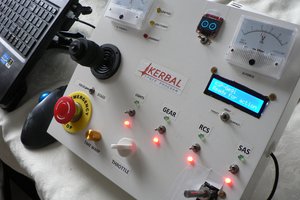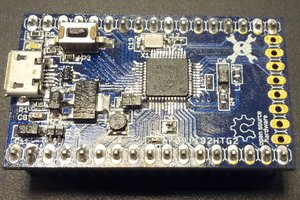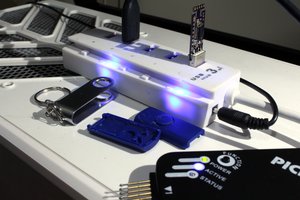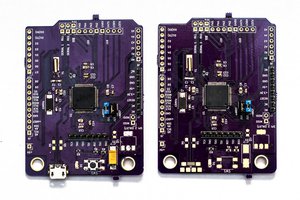Overview
DMX-84 is a hardware and software driver for TI-84 calculators to run DMX equipment such as DJ and theater lights. It is currently written as an Axe include program, but it may be rewritten as an Axiom in a later version. The driver requires an Arduino-based adapter to transmit DMX.
How It Works
Concept Video
Block Diagram & System Design

Here is a visual block diagram of how the project communicates.
- The TI-84 communicates with the Arduino over a modified version of the two-wire TI Link protocol.
- The Arduino is powered over USB by either the TI-84, a PC, or even a decent quality phone charger (not pictured).
- Also over USB, the PC can debug the Arduino using a serial console at 115200 baud.
- The Arduino transmits DMX to the receiver(s).
- The receivers listen for their respective channel values and provide variable power to the light fixtures. Alternatively, each light could have a receiver built in such that the lights could be daisy chained together directly, but the concept is still the same.
The software
The software driver on the calculator is an implementation of an application-specific protocol. The protocol is designed to be as lightweight as possible to minimize transmission time. To accomplish this, messages consist of a single command byte followed by optional parameters, wrapped in a standard TI link packet. For details on the protocol, see DMX-84/doc/Protocol.md.
The hardware
The hardware driver is an Arduino Pro Mini 328 - 5V/16MHz produced by Sparkfun. I selected this board because its small feature set is perfect for this project, especially because it can be powered by USB Mini B from the calculator (or an external USB power supply). I also selected it because of its small size and relatively low price. The Arduino handles the calculator input and stores the channel values in memory. It transmits DMX packets at 250 kbaud using a slightly modified version of the DmxSimple library. Between the Arduino and the DMX Out jack is a transceiver that converts the +5/0V signal from the Arduino pin to a differential +5/-5V signal.
The adapter connects to the calculator through a combination of a 2.5mm audio jack for the serial data and a USB Mini B to FTDI adapter for power, serial debugging, and firmware updates. The Arduino can also receive power from any normal USB power supply, such as a computer or even a phone charger.
The Arduino transmits DMX packets over a 5-pin XLR female jack. An LED mounted on the enclosure indicates the system status (normal, error, debug, etc.). All of the hardware is housed in a small aluminum enclosure, painted black for theater use.
Theater Demo
Open Source Licenses
DMX-84 uses certain open source hardware and software.
- DmxSimple library: LGPL
- The version used in DMX-84 is modified and thus is also released under the LGPL by section 2.a. (Conveying Modified Versions).
- Arduino Pro Mini: CC BY-SA 3.0
All other software used in the project, as contained in the repository, is open source under the GPL version 3.







 Maciej Witkowiak
Maciej Witkowiak
 Michele Perla
Michele Perla
 Jarrett
Jarrett
I have no lighting fixtures reachable, but I recognize a few those who might permit me borrow a few for a video. Stay tuned, however remember the fact that it gets hard to locate time at some point of the semester and see the project here https://bestaxeguide.com/best-double-bit-axe/